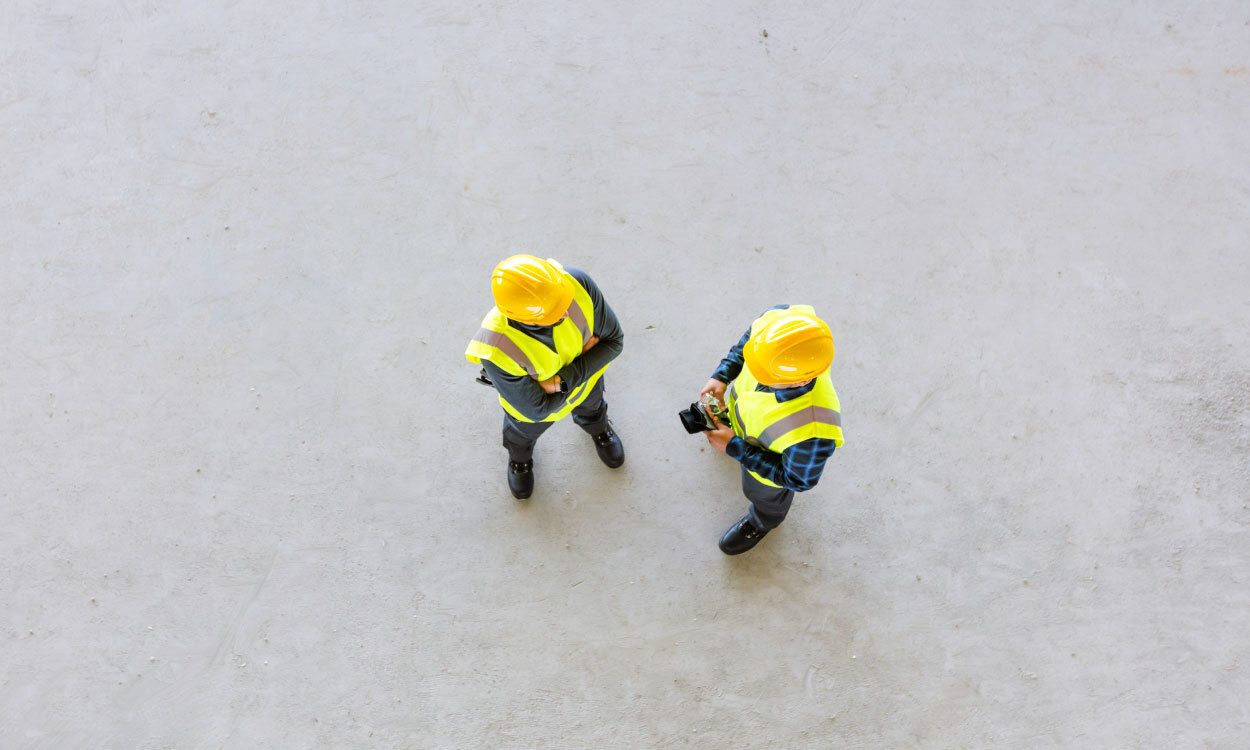

29 Sept 2025
How to Ensure Quality Control on a Construction Site
Quality control is at the heart of every successful construction project.
Without it, contractors and subcontractors face costly rework, safety risks, reputational damages and potentially even financial disputes. Ensuring quality is about much more than just workmanship; it extends to how the site is managed, how teams are coordinated and how compliance is maintained.
At Contractwise, we support all construction professionals. As a leading CIS payroll company, we specialise in protecting contractors and subcontractors across the UK by ensuring CIS compliance, conducting payroll audits and eliminating the risk of HMRC reclassification. Our services give construction businesses peace of mind that while they focus on delivering safe, high-quality projects, their payroll and compliance obligations are fully managed.
In this article, we’ll explore what quality control in construction really means. We’ll cover the differences between quality control and quality assurance, as well as the practical steps you can take to maintain high standards on your site.
Read on to find out more…
What is quality control in construction?
Quality control in construction refers to the processes, inspections and standards used to ensure that work on a site meets the required specifications and industry regulations. It’s not just about aesthetics, it also covers safety, structural integrity and compliance with contractual obligations and the requirements of a project outlined by the client.
In practice, quality control in the construction industry means setting measurable standards, monitoring work at every stage and correcting issues before they become a serious issue. It includes regular inspections, material checks, reviewing workers’ performance and ensuring all activities align with legal requirements.
What is quality assurance in construction?
While quality control focuses on identifying and correcting issues during construction, quality assurance takes a broader view. It’s about the systems, processes and frameworks put in place to prevent problems from occurring in the first place.
For example, detailed training programmes, procurement policies that vet suppliers and clear design approval processes all form part of quality assurance. The aim is to create a culture where quality is embedded in every decision - long before the first brick is laid.
What is the difference between quality control and quality assurance?
Though closely related, quality control and quality assurance serve different purposes. Let’s take a closer look:
Quality control: In construction projects, quality control is reactive. It checks and inspects the work being carried out, identifies defects and ensures corrections are made.
Quality assurance: In contrast, quality assurance is proactive. It focuses on setting up systems, policies and training to reduce the likelihood of errors occurring in the first place.
Together, they form a complete quality management approach. Quality assurance sets the framework, while quality control ensures the framework is properly applied on site.
Benefits of quality control
Implementing strong quality control measures on a construction site delivers a wide range of benefits.
This includes:
Reducing costly rework: Spotting and fixing errors early will help to avoid delays and wasted resources, which may cost you money.
Improving safety: Quality inspections will reduce the risk of failures, accidents and hazards, protecting workers and the general public.
Enhancing client satisfaction: Projects that meet specifications and are delivered on time strengthen the relationship between the company and the client.
Boosting reputation: High-quality projects will make your organisation more credible, therefore increasing your credibility and reputation.
Meeting compliance requirements: Proper documentation and inspections ensure adherence to legal and contractual standards.
Boosting efficiency: Standardised processes reduce mistakes and increase productivity.
For contractors and subcontractors, the financial benefits of quality control are clear. It reduces the risk of disputes, financial penalties and lost time.
How to ensure quality control on a construction site
Strong quality control in construction projects isn’t something that happens by accident. It requires careful planning, consistent monitoring and a commitment to correcting issues as soon as they arise. Site managers and contractors can adopt the following practices to raise standards and ensure quality throughout every phase of the project:
Define expectations in advance
One of the most effective ways to avoid errors is to set expectations clearly before work begins. Every stakeholder, from subcontractors to suppliers, needs to understand the specifications and quality benchmarks that are expected from them. This prevents any confusion and ensures the entire team has a shared understanding of what is expected of them and what success looks like.
Have inspection plans
Inspections shouldn’t be infrequent or informal. Instead, they must be scheduled at key milestones and regular points throughout the project. An inspection plan ensures checks are systematic and problems are caught before the next stage of work begins. These inspections also create accountability as everyone will be aware that their work is being reviewed and, therefore, needs to meet a high standard.
Create a quality control checklist
A well-prepared checklist helps site managers standardise inspections and make sure no details are overlooked. Items might include verifying materials against specifications, checking the accuracy of measurements and ensuring all safety procedures are followed. By using a checklist, managers can keep a record of what has been inspected, which is vital for both compliance and dispute resolution.
Correct inaccuracies
Even small inaccuracies can soon snowball into major issues if they aren’t fixed promptly. For example, a minor misalignment in foundations can create huge structural problems later on. By addressing inaccuracies as soon as they’re identified, contractors save time, reduce costs and avoid rework. By immediately correcting the problem, you also signal to your workforce that quality is non-negotiable.
Review and analyse problems
Quality control isn’t just about spotting mistakes - it’s also about learning from them. If an issue arises, site managers should analyse the root cause, whether it’s poor training, unclear instructions or the use of substandard materials. By reviewing problems in detail, future mistakes can be prevented, creating a culture of continuous improvement on-site.
Hire experienced workers
The experience and skill of the workforce have a huge impact on the quality of construction projects. Skilled tradespeople are less likely to make errors and more likely to produce work that meets or exceeds expectations. Contractors should invest in hiring reliable subcontractors, provide ongoing training and ensure that less experienced workers are properly supervised.
Always use the right materials
Quality projects depend on quality inputs. Using cheaper or unapproved materials may cut costs, but it can also compromise safety and durability. Contractors should always verify materials that meet project specifications and the relevant building codes. Materials should also be stored and handled carefully to prevent damage and deterioration.
Carry out risk assessments
Risk assessments are a proactive way to ensure quality by identifying potential hazards or weaknesses before they affect the entire project. For example, a risk assessment can highlight how poor weather conditions might affect the project. Anticipating these risks can help managers to adjust workflows or add safeguards to ensure quality is not compromised.
Make workflow clear
Clear workflows reduce confusion and increase accountability. Every worker should be aware of what their responsibilities are, the order of tasks and the quality standards they need to meet. When workflows are unclear, tasks might overlap or be missed - which can impact quality. Effective workflow management ensures smooth coordination and keeps the project on track.
In practice, ensuring quality control in construction involves weaving all of these elements together in your daily operations. However, to be effective, it requires leadership from the very top to ensure problems are fixed immediately rather than allowing them to grow.
What is a quality control construction plan?
A quality control construction plan is a formal document that outlines how quality will be monitored, measured and maintained throughout a project. It sets expectations for materials, workmanship and ongoing responsibilities.
This plan acts as a roadmap for site managers, subcontractors and clients.
How to create a quality control construction plan?
There are several ways to create an effective quality control construction plan. This includes:
Communicate clearly
Every person involved in the project should understand the standards that need to be achieved. This means holding detailed meetings to ensure information is properly fed to the relevant workers. Keeping open communication channels at all times makes it easier to raise issues if a problem is spotted.
Have a backup plan
Construction rarely goes to plan. From weather disruptions to supply chain delays, a quality control plan should include contingency measures to ensure standards don’t slip even when challenges arise.
Utilise technology
Modern construction projects benefit enormously from digital tools. Project management software and apps allow managers to log instructions, track progress and share updates in real time. Technology helps to give people a clear view of how quality is being maintained.
Include project specifications
Specifications act as the benchmark for quality. A robust plan should include all technical requirements, including materials, dimensions and safety information. Without precise specifications, workers might interpret requirements differently, which can lead to inconsistencies.
Project success relies on quality control, as well as financial compliance. With the help of Contractwise’s range of CIS services, all contractors and subcontractors are safeguarded against HMRC risks. To find out how we can protect you, contact our team today.